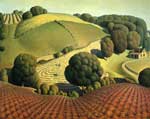Gestalt
Gestalt is German word that roughly translates as "shape." Gestalt theory is involved with visual perception and the psychology of art among other things. It is concerned with the relationship between the parts and the whole of a composition and how people tend to perceive objects as organized patterns or shapes... as simply as possible. According to Gestalt psychology, the whole is different than the sum of its parts.
The Gestalt Laws of Perceptual Organization
|
||||
The law of closureWe tend to ignore gaps and complete contour lines. If something is missing in an otherwise complete figure, we will tend to add the missing piece(s). |
||||
| We tend to see complete shapes, even when part of the information is missing. | 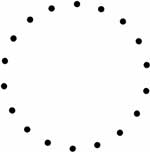 |
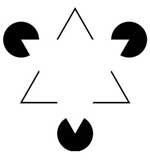 |
||
 |
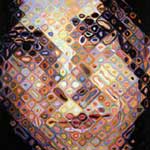 Chuck Close |
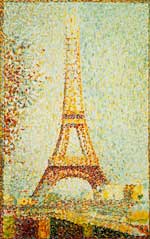 Georges Seurat |
||
| An advertisement tries to make us connect the parts of the ad into terms that we already know and make it into a meaningful whole. |  |
|||
The law of similarityWe will tend to group similar items together, to see them as forming a shape or unit, within a larger form. |
||||
Similarity can contribute significantly towards achieving unity. The more alike the items are, the more likely they are to form groups. |
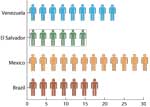 |
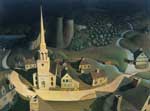 Grant Wood |
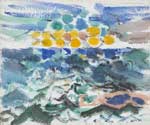 John Marin |
|
| The three major similarity types are: | Size |  |
||
| Color/Value | 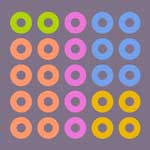 |
|||
| Shape |  |
|||
The law of proximityWhen an individual perceives an assortment of objects, they perceive objects that are close to each other as forming a group |
||||
| The closer items are to one another, the more likely they are to be seen as a group. | 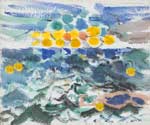 Altered John Marin |
|||
The law of continuityThe law of continuity states that objects arranged in either a straight line or a smooth curve tend to be seen as a unit. |
||||
The mind continues visual, auditory, and kinetic patterns. |
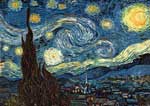 Vincent van Gogh |
|||
 |
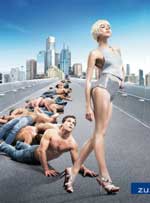 |
 |
||
| Continuity and closure are built into typography since we are taught to read left to right in our culture. Once you start reading, you will continue across a gap to the next words. |
||||
Side Note: Painters have used photographs as a source for their artwork pretty much since the invention of photography (1826). For the most part, the photo is used much like a model... most artists don't try to duplicate the exact appearance of the SUBJECT... rather they alter the FORM of the composition and put their own CONTENT or expression into it. Here's work created by artists using photos as sources. |
Similarly, clipart may be used as a source for inspiration; but, make it your "own"... As a graphic designer, your client isn't paying you to duplicate someone else's work... be creative, be original. Here's some examples of clipart/photo misuse. (IMHO) |
|||
Next Tuesday, May 9 th
Final exam
AND Turn in your sketch book
with ALL assignments, labeled... including your nameplate.
Thursday, May 11th ...you may pick up your sketchbooks from 3:30pm to 4:00pm. Sketchbooks not picked up during this time may be retrieved during the first two weeks of Fall 2017 semester. After that time, they may be recycled.

